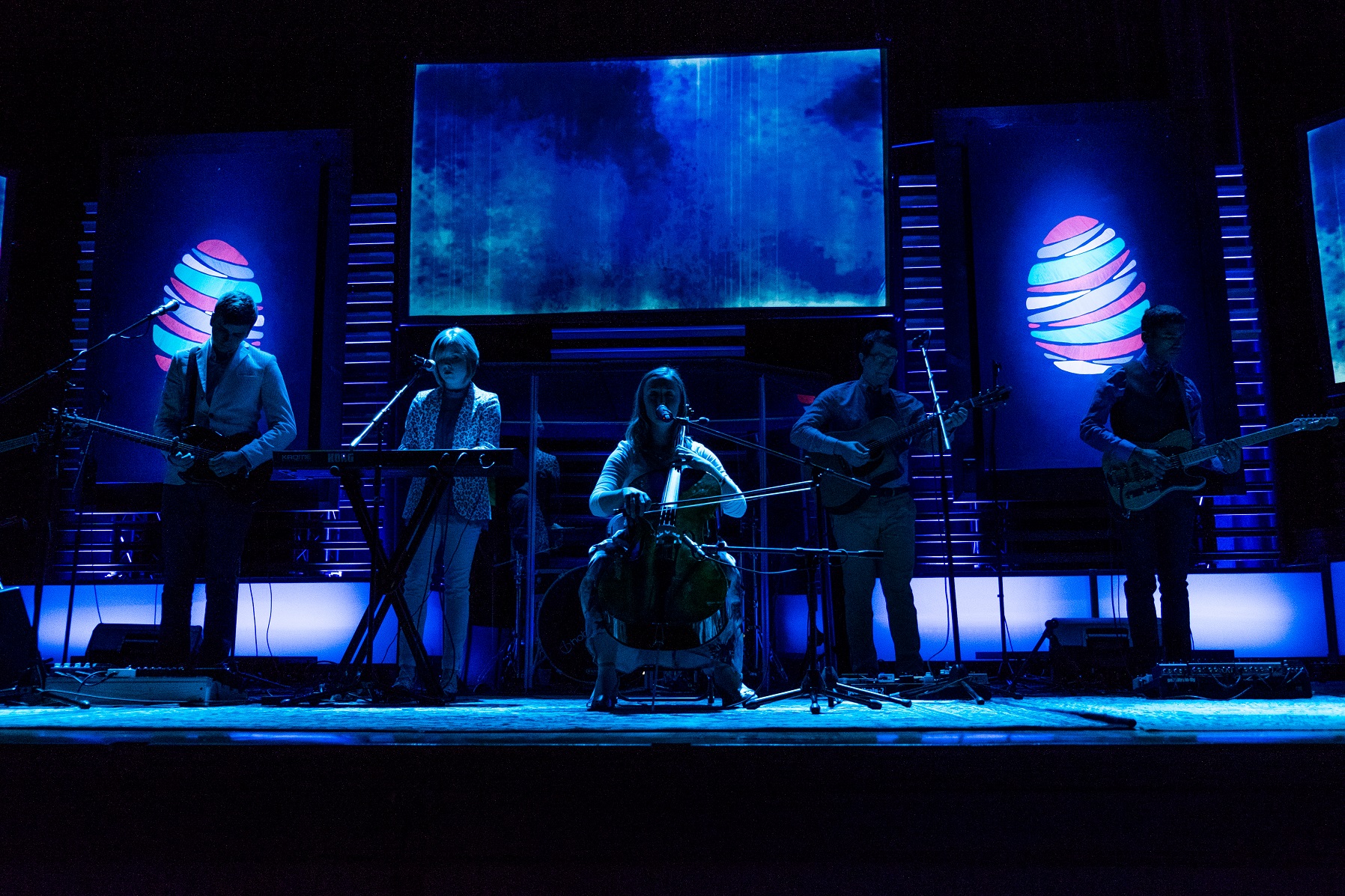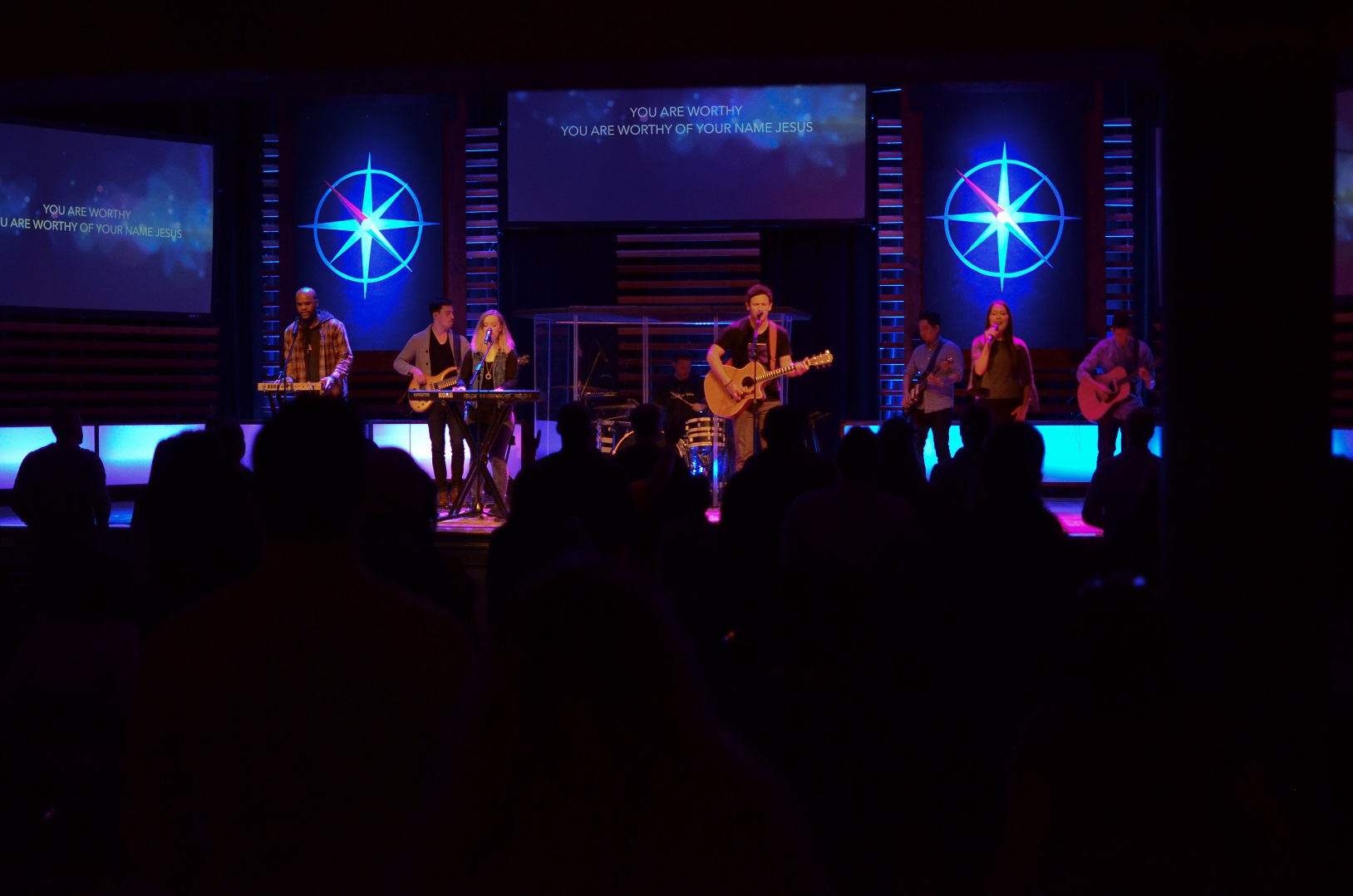
Chalkboards. They’re in almost every coffee shop in Hoboken, every restaurant, and even many clothing stores and salons. You find them on the street in A-frame signs, in store windows, displaying menus behind a counter – everywhere.
About a year and a half ago, I was meeting with a small group that had come together to design a set for our stage. We were talking about what we wanted it to feel like, what the purpose of it was and all sorts of details when someone started talking about how chalkboards are everywhere. It was definitely not the direction I had been thinking for this set, but before I could ask any questions the rest of the group was jumping on board, discussing the size and shape we’d use, how many we’d need and what their purpose would be. We were off to the chalkboard races, and after a few months of designing and constructing, we revealed our new set, complete with gigantic Easter eggs.
Fast-forward a week to when I realized that changing the artwork on these giant chalkboards was about to become a regular part of my life. And this was not going to be an easy task.
I realized pretty quickly that in order to make the images look like the artwork we had designed on a computer, I’d need a way to project the art on the board. So I did just that. I took one of the projectors from our side screens and threw the image up on the chalkboard so I could trace it. From there it often took upwards of an hour to measure and get the image centered, the right size, etc. But I got faster the more I learned.
Then came the hard part. The steady-hand part. I’ll admit I had a lot of flashbacks to childhood classrooms, feeling like my handwriting was just a hot mess and that it would never be as neat or consistent as some of the other students. I had to work hard to make sure lines were straight, smooth and furthermore the same on both chalkboards. That part was probably the most frustrating. I often got close to finishing the second chalkboard and would start over, realizing it was noticeably smaller or larger than the first.
My least favorite design to do, which actually re-appears most often, is our Hoboken Grace logo icon – the circle with the cross in the center. Nothing frustrated me more than trying to get those darn circles smooth instead of wobbly. It only takes one stroke for the whole thing to look like a kindergartner drew it. But I grew to accept the challenge each time and got better as my strategy matured.
Then there are the total and complete failures. During the Burst series last summer, I was so excited to try something different. The artwork was a burst of multicolored chalk dust and I thought, how cool would it be to use dust this time? So I ordered this special dust and went at it. What resulted looked more like a sea of multicolored oatmeal, and I looked like I had just completed a color run. It just didn’t work. I was so determined and convinced it would, but after I turned on the stage lights and tried some different colors I realized how utterly terrible it looked. What ensued was a good hour of cleaning off the chalkboard, the floor under it and myself.
But over time I got into more of a routine with the chalkboards, got to know how they would accept or deny the markers I chose, how they cleaned off best, etc. And I got into a routine of how I approached working on them. I began to look forward to the hours I’d need to spend staring at a blackboard, rather than dreading them. There was something about doing something with my hands that allowed my brain to more freely process things going on in my life. Sometimes it was just thinking through big-picture obstacles I was facing in my job; other times it was extra time to talk to God about whatever (or whoever) was stressing me out. It became this place I could hash out all the things I needed time to think through or pray through.
Over time I would get questions like, “Do you like doing the chalkboards?” And my answer was always yes. At first I think it felt selfish that I got to spend that much time there, but the more I realized what I was actually able to experience through being there, the more I wasn’t feeling so guilty. Doing the chalkboards has taught me the importance of time to think and time to listen for what God is really saying to you.
We often talk about creating this “God time” in our lives and have this idea that it has to look a certain way – you have to be sitting in an artisanal chair by a window with a plant in the windowsill, sipping free-trade coffee and being Instagram-ready to have time with Him. I’m not sure where we got this idea, but I have grown to really hate it simply because it can make us feel like we aren’t doing it right. But that idea is purely based on what the world says. What does God actually say about it? Well, how will we know if we never actually figure out how we can commune with Him?
Sometimes the rhythms we have to create in our lives in order to experience God don’t make any sense whatsoever on paper. It may sound ridiculous to say, “I have to take a day away to go be in nature with God,” or, “It’s been too long, I really have to go for a run,” or “I think I need to go organize something.” Whatever it is for you that you’ve found you experience God in, maybe it’s time to make some more time for that. And to not feel guilty about it. God created you uniquely, and how one person experiences Him might not be how you do. That’s okay. It’s worth figuring out. It’s worth making the time for whatever the chalkboard is in your life.




Follow us